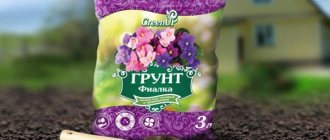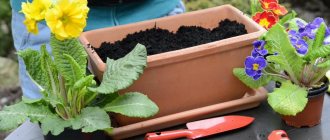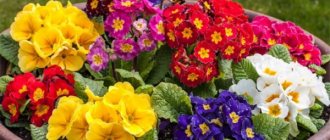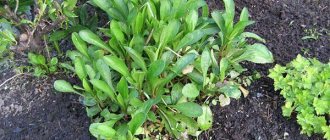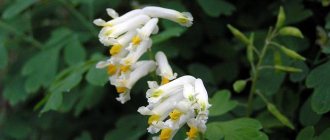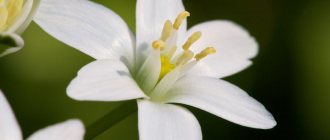It so happened that in everyday life a plant is called chamomile, which in botanical terms has nothing to do with the genus Chamomile. As a rule, plants from the genus Nivyanik have habitual inflorescences with white ligulate marginal flowers and yellow tubular middle flowers. Flowers from other genera of the Asteraceae family are very often found under the name yellow perennial daisy:
- gerberas
- nivyaniki
- doronicums
- chrysanthemums
- asters
Let's try to figure out which plant can rightfully be called yellow chamomile, and which is just called that.
Doronicum perennial - what kind of garden flower is it, what family does it belong to?
Doronicum (Doronicum) is a perennial flower belonging to the Asteraceae family. The plant also has other names - gooseberry and yellow chamomile.
Brief description, history of origin, why prairie flower
The plant has wrapper leaves characteristic of chamomile, growing in several rows around corymbose inflorescences. There is a small bulge at the top of the peduncle. The oval, oblong serrated leaves have a dense structure and can reach 12 cm in length. The diameter of the corymbose inflorescences is about 5 cm. The reed flowers have a bright yellow color.
Yellow daisies
The first mention of yellow daisy dates back to 1584. The species is believed to have originated in the Mediterranean. The flower grows in dry places that have almost turned into steppes and meadows.
Interesting! The plant is also found on rocky slopes, sunny edges, forest clearings and bushes.
Yellow garden chamomile: plant characteristics
Chamomile gets its name from the Latin word Matricaria, which means “uterine herb.” This is a genus of flowering perennial plants from the Asteraceae family. The flower blooms already in the first year of life.
This genus includes more than twenty different species of herbs. The most common is chamomile or fragrant. In our country it is bred for medicinal purposes. Fresh and dried chamomile herb is used as an anti-inflammatory, antiseptic mouth rinse, for preparing medicinal infusions, and for treating the gastrointestinal tract. This plant is widely used in cosmetology: it is part of creams, shampoos, and balms. Used in aromatherapy (the tops and flowers of the plant contain essential oils) as a sedative.
Yellow garden daisy
Interesting: we must remember that chamomile can cause allergic reactions, which means there may be contraindications for it.
Wild chamomile can be found in America, Africa, Europe and Asia.
The name chamomile came to us from the Poles in the 16th century, translated as “Romanov’s color.” Historical documents contain references to chamomile in the second half of the first century. Pliny the Elder (Roman scientist) wrote about chamomile in his encyclopedia, calling it Chamaemellon, which is translated from Greek as “low apple.” It received this name for its low size and light aroma, reminiscent of an apple.
Note! Chamomile begins to bloom in April and blooms until late autumn. Pollinated by bees and wasps.
The plant is not tall, the length of the stem can be from 15 to 60 cm. The greenery of the flower is pinnate. The inflorescence consists of two components: the core is made of small tubular flowers, and along the edge there are white false-ligulate petals. The root system is weakly branched.
Description of varieties bred from pure Doronicum
What are the names of flowers that look like daisies?
Based on this variety, many beautiful varieties have been bred.
Doronicum eastern
Herbaceous perennial plant, half a meter tall. Places of growth - the Caucasus, the Mediterranean and Asia Minor. The ovate basal foliage with long petioles is serrated along the edges. The diameter of the pale yellow flowers is 3-5 cm. The core has a brighter, golden hue.
Doronicum eastern
Doronicum plantain
The height of the plant reaches one and a half meters. On strong, slightly branched shoots there is oval, dark green foliage. The foliage is serrated.
Doronicum plantain
Cluse
Habitat: high alpine meadows. The height of the plant is up to 30 cm. The jagged foliage is covered with cilia and thick pile. At the pubescent top there is a bright yellow basket. The diameter of the flowers is 3-6 cm.
Doronicum Clews
Varieties with descriptions
In total, there are approximately 40 varieties of yellow daisies. The most common types of Doronicum include the following.
Eastern or Caucasian
The plant grows up to 50 cm. It is characterized by horizontal swollen rhizomes. The stems are covered with a minimal number of leaves, which are ovoid in shape. The basal leaves are serrated petiolate. This variety is most often found in gardens.
Flowering begins in mid-May. At the same time, daisies are yellow in color and reach a diameter of 8 cm.
Their flowering lasts 30-40 days. After this, the aboveground part dies off.
Plantain doronicum
Plantain
This is a fairly tall plant, reaching 140 cm. The plant is characterized by a tuberous rhizome. Its leaves and stems are covered with light fluff.
The culture does not form seeds. To grow it, you should choose open sunny areas.
It begins to bloom at the end of May and remains decorative until the beginning of July. The flowers reach a diameter of 12 cm.
Austrian
This plant has pale yellow flowers, the diameter of which is 8 cm. The baskets form large flowers. They include 10-12 pieces.
Flowering begins in mid-July and lasts about 1 month.
This variety can withstand frosts down to -30 degrees.
Other
A couple more well-known varieties:
- Klumna - this plant is decorated with yellow flowers that have narrow petals. Their diameter is 5 cm. The height of the bushes does not exceed 40 cm. Flowering begins in the first half of summer. The plant has branched stems. It looks great on rocky hills.
- Cluse is a low-growing plant, the height of which is 10-30 cm. The leaves are serrated and covered with fluff. Flowering occurs in July-August.
Doronicum eastern looks very impressive.
Growing from seeds
Doronicum is grown both through seedlings and through direct sowing of seeds in open soil.
Seedlings
Perennial gladioli flowers - description
Seeds are sown in April. Until the end of spring - beginning of summer, seedlings should be kept indoors. Once the threat of frost has been minimized, they can be planted in open ground.
Using the seedless method
Doronicum flower loves semi-shaded places, away from trees. The soil should be light and slightly acidic. Before sowing, the area should be dug up and complex fertilizer should be added to the soil. In the spring, before sowing, the furrows are filled with water.
Important! In autumn, soil moisture is not required, since crops may freeze or get wet.
Daisies in garden landscape design (with photo)
Well, now, about chamomile itself. What we take for a large flower with a yellow (most often) center is actually an inflorescence of two types of flowers: some, external ones, seem to us to be petals, others, internal flowers, we take for stamens. Actually, that’s why the family is called that, because the flowers are so cunning and complex.
But in cultivation, chamomiles are simple. Probably their only drawback is their relative fragility. They grow quickly, develop quickly, but after three years they begin to grow out. This can be easily “treated” by division.
That white beauty with a fragrant yellow center that is found in fields and in village front gardens is meadow chamomile, or common cornflower (Leucanthemum vulgare).
It does not live long, but it sows itself - just know that you remove unnecessary seedlings. But in garden design, such a chamomile is irreplaceable - it adorns any flower beds with its shining whiteness. No care. A similar chamomile, only larger in size, is the largest chamomile (L maximum). It is more durable. She also has several varieties, of which the terry varieties are usually the most attractive.
Chamomiles are unanimous in their attitude to light: they love it, and it is better to plant them in full sun. I wouldn’t mind eating chamomile either, but they grow faster in oily soil.
Look how beautiful daisies look in landscape design in these photos:
Basic growing rules
Ampelous unpretentious perennial flowers for the garden
Now you need to understand how doronicum is grown from seeds and when the flower needs to be planted on the site.
Preparing and sowing seeds
Cellular trays can be used as planting containers. An earth mixture is poured into them - coarse sand and peat (in a ratio of 1 to 1). Up to 3 seeds are sown in each cell, the containers are covered with film, and placed in a place inaccessible to sunlight.
Deadlines
Sowing seeds should be done in mid-spring - in April. The seedlings should spend a month to a month and a half at home. In early June they can already be planted on the site.
How to care for seedlings
Seedlings need systematic ventilation, removal of condensation and moistening of the soil mixture. When the first shoots appear, the level of illumination needs to be increased. Weak tall plants (more than 4 cm) need to be pruned. One of the most persistent sprouts should be left in each compartment.
Seedling care
14 days before planting, you need to start hardening the seedlings daily.
Note! The most effective way to grow yellow chamomile is the seedling method.
Site selection and soil preparation
Semi-shaded areas with loose, moderately moist soil are ideal for the flower. It is not recommended to plant chamomile close to the trunks of mature trees. The soil should be dug deeply (a quarter of a meter deep) in the autumn. During planting, feed the soil with rotted manure.
Planting in open ground
The planting holes should be at a distance of half a meter from each other. The size of the hole should correspond to the size of the seedling with a ball of earth. The flower is placed in the hole, sprinkled, compacted in the soil, and then slightly moistened.
Main diseases and pests of crops and control measures
Small chamomile
Chamomiles, like other plants in the garden, are not immune to various diseases and pests, although this plant has strong immunity and increased resistance.
Diseases may be the following:
- fungal diseases;
- fusarium;
- gray rot;
- rust.
Rust on a plant can be easily detected by the brown or brown spots that appear on the chamomile. It is necessary to spray the flowers with Fitosporin, or any fungicide - these drugs are suitable for any fungal diseases. Lesions can be stopped at the initial stage by spraying the plants with a weak solution of soda and soap.
Fusarium begins with rotting of the roots, the lower leaves gradually begin to fade, turning black, and then the rest. It can actively develop in high humidity due to large amounts of rain. The disease affects flowers very quickly. Since the disease begins from the ground through the roots, the plant, unfortunately, cannot be helped. We urgently need to dig it up and burn it. Be sure to spill the place where the daisy bush grew with a solution of copper sulfate. And nearby plants must be treated with fungicides for prevention.
For a plant to be healthy, it needs proper care. To prevent any diseases of daisies, it is necessary to carry out prevention:
- water should not be allowed to stagnate in flower beds or in the ground;
- before planting plants, it would be very good to treat the soil with the same fungicidal preparations;
- carry out regular weeding between plant bushes;
- Remove faded inflorescences in a timely manner.
So, if you need to decorate the local area of your home, garden, or cottage, then yellow daisies will be an excellent choice. Landscape design with these bright colors will take on a lively, well-groomed look. Thanks to long flowering, the flowerbeds will be fragrant with fresh bouquets in different colors, a delicate aroma will be in the air, and your soul will be calm and joyful.
0 0 votes
Article rating
Features of plant care in open ground
The Doronicum flower, planting and caring for which does not require special attention, still has its own growing characteristics.
Watering
Since chamomile roots are located at the top layer of soil, the plant needs frequent moderate watering. Water the flower with settled warm water.
Spraying
During hot periods, the plant requires evening spraying or sprinkling procedures. It is important not to overdo it, otherwise you can provoke diseases.
Caring for chamomile outdoors
Humidity
It is difficult for yellow daisies to tolerate excess moisture, so it is better not to plant flowers near large trees or in low-lying places.
Priming
Acidic, clayey and heavy soil is not suitable for chamomile. The best option would be light, loose, slightly acidic soil containing useful substances.
Feeding
In spring, the plant needs complex fertilizers. Both mineral compounds and organic matter are suitable for the flower. At the end of August, during the period of growing new rosettes, the roe grass is fertilized with nitrogen-containing compounds.
Note! Yellow perennial chamomile is resistant to cold, so it does not need to be covered in winter.
Flowers most similar to daisies
The most similar to daisies are plants of the genus navel, cornflower, three-rib, chamamelum, pyrethrum (popovnik) and some others.
All of them have features that allow them to be distinguished from true daisies, but at first glance to the uninitiated person they are typical daisies. Moreover, their places of growth are similar to those of plants of the genus Matricaria - these are typical field or meadow flowers that grow abundantly in open areas of soil without dense plant cover, but then disappear where tall, shade-forming weeds appear. Let's look at a few of these plants and find out how they differ from daisies.
In the photo below - odorless tehrebernik, or odorless chamomile:
Its main distinguishing feature is the absence of odor in the inflorescences. Chamomiles smell very strong in comparison.
An even more clear difference: the absence of a cavity inside the receptacle. In the photo below, on the left is a cut inflorescence of chamomile, and on the right is an inodorous chamomile:
It can be seen that chamomile has a hollow receptacle, while chamomile has a solid receptacle.
Another difference between this plant and chamomile is that its seeds have only three sides. This can be seen in the photo:
Chamomile fruits have significantly more such ribs:
Actually, three-ribs got their name for this feature.
Other plants similar to chamomile are navels. This genus includes the field navel, the Russian navel, the dog's navel, which is also stinking, and some other species that form low bushes with the same inflorescences as those of chamomile.
The photo below shows a dog’s belly button:
Outwardly, it is easy to confuse with chamomile, but if you smell its flowers, you will immediately notice the difference: the smell of dog's belly button is very unpleasant.
Here is the field navel, Anthemis arvensis:
All navels differ from true daisies in the absence of a cavity in the receptacle.
Cross-section of a Russian chamomile inflorescence.
Very similar to daisies, daisies are also predominantly annuals that grow in open spaces. The photo below shows the common cornflower, or popovnik:
Its inflorescences are somewhat larger than those of chamomile. If the latter has an inflorescence with a diameter of 15-25 mm, then the average size of the nevus is 40-60 mm.
The inflorescence of the cornflower will not fit on the thumbnail, like the inflorescence of a chamomile.
Another genus of plants very similar to typical daisies is Hamamelum. It includes two types of plants, the most famous of which is Roman chamomile. It is very widely used as a medicinal plant in folk medicine, and in European pharmacopoeias it is no less significant than chamomile. Its inflorescences are also very similar to those of chamomile:
But they do not have an empty cavity in the receptacle, and the structure of the vegetative part of the plant differs from that of typical daisies.
In particular, Roman chamomile has significantly thicker and denser leaves.
Finally, flowers that are very similar to daisies belong to the pyrethrum genus. In particular, this is feverfew (also known as tansy):
...and girl's tansy:
It is noteworthy that individual subspecies of tansy have double inflorescences, which are clearly distinguishable from the inflorescences of chamomile. They are also called “fluffy”. Small flowers of a typical shape are very reminiscent of chamomile and are often called that. It is noteworthy that tansy also has pronounced medicinal properties, but in general it is used in medicine less often than pharmaceutical chamomile.
The plants listed above are so similar to chamomile that they are easier to confuse with it than to distinguish them from it. At the same time, there are hundreds of other plants that are called daisies and considered as such, but which, in reality, are not daisies and are very easily distinguished from them.
When and how does it bloom
All types of flowers are painted in different shades of yellow, the centers usually have a darker color - dark yellow or brown. Doronicum has an interesting property: when weather conditions change, it changes the size and color saturation of the petals. The diameter of the inflorescences ranges from 4-15 cm.
Doronicum flowering
Flower shapes
The shape of the flower looks like a small sun. The effect of this is enhanced by the fluffy bright yellow core.
Flowering period
Yellow daisy blooms in spring and ends in late summer. Cut flowers, when in water, remain fresh for about 2 weeks.
Changes in care during the flowering period
During the flowering period, chamomile needs good watering, especially in dry weather. Mulching can also be used. You should not loosen the soil around the bushes, as you can damage the surface root system. At the end of flowering, the plant needs pruning.
Features of reproduction
Growing yellow daisies is not difficult. The following methods can be used to propagate the crop:
- Seeds. In summer, drying boxes need to be cut off and dried on the windowsill. The seeds should be removed from the head and further dried on paper.
- By cuttings. This is the simplest and most effective way. Yellow daisies are considered perennials. Therefore, next year the planted bush will bloom again and delight the gardener.
- Root sections. The root system of the plant is considered quite powerful and long. Therefore, for propagation, it is enough to simply move part of the earth to a new place on the site.
The crop can be propagated by seed.
Possible problems in growing
Although doronicum is not a capricious flower, problems with its cultivation still sometimes arise.
Problems with leaves
A common cause of damage to daisy foliage is the activity of slugs. They love to eat green leaves. To prevent their appearance, the soil around the plant should be sprinkled with hot ground pepper. This will prevent pests from crawling to the flower.
Important! At the end of flowering, some of the leaves dry out and lose their aesthetics. In this case, dry foliage should be cut off.
Pests
Yellow chamomile is often attacked by aphids and thrips, which suck the juices from the flower. To combat them, various insecticides are used, which effectively help get rid of small pests.
Pests
Diseases
In case of excessive watering, gray rot may appear on the plants. In this case, the plants need to be thinned out, infected parts removed, and watering adjusted.
When overmoistened, the flower is also susceptible to rust and powdery mildew. In this case, you need to reduce watering and remove damaged parts of the flower.
Signs of improper care
If Doronicum has not been planted for a long time, then its flowers may be too small. To rejuvenate, the plant should be dug up and divided into parts.
Problems can also arise with too much light. Although Doronicum is a light-loving plant, if exposed to excessive sunlight, the flowers can become significantly smaller.
Growing Doronicum in open ground is quite simple. Even an inexperienced gardener can cope with this task. By providing the plant with proper care, it will be especially pleasant to enjoy the lush flowering of your garden pet.
Growing, planting and care
To properly care for doronicum, the gardener does not need any special skills or special tools. This flower is one of the most unpretentious of all types of garden ornamental plants.
Basic requirements are sun and water. The plant loves abundant watering, so it needs to be irrigated often so that the petals are bright and large. In addition, it is best to place flower beds with doronicum in sunny areas of the soil so that it can grow and develop faster.
The main criterion for choosing a care regimen is the variety. Many subspecies of yellow chamomile have their own growing nuances. For example, doronicum eastern requires more abundant watering, and plantain variety loves the sun's rays.




